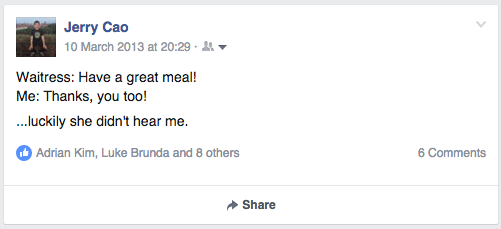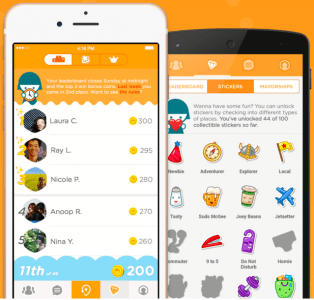In this final, we speak with 3 more experts for app engagement advice.
For more advice based on interviews with UX and PM folks, check out Part 1 and Part 2.
1. Elena Schulte

UX Designer
How do the apps you use keep you engaged?
I have a bunch of apps that have become part of a daily routine. Morning coffee goes well with Twitter and news apps. On subway rides, I use Instagram, Facebook (to pass the time) and a travelling app. I also use a banking app, as I haven’t carried cash for many years now and it gives me a good overview of my finances.
The pattern in all these apps is that each of them answers to one specific need:
- Twitter: What’s new in my field of work?
- Banking apps: how much money do I have on my account
- Travel apps: how do I get from point A to point B most effectively
The apps keep me engaged by primarily answering to my specific needs. They also provide that information reliably and without friction.
To make the answer short: consistency and contextually-relevant information.
How should a mobile app tell users about new features?
Do you really have to announce that new feature? Is it something that the user would not identify by herself? Does it add enough value for it to be worth announcing?
If you answered “yes” to all of those, then please go ahead and make a short intro to the new feature next time when the app opens. Short is a key word here. Or even more discrete, highlight the category where the new feature was added.
Is the new feature so good that it can’t wait for the user to start the app next time? In that very rare case, I would make a minimal change in the icon, or send an email to those that have decided to subscribe to the newsletter. I would also choose to do this scarcely, as it can cause irritation when overused.
As a UX expert, what advice do you have for keeping a great user experience after year 1?
If they’ve been engaged for a year, then something was done right.
Keep doing that, and continue testing and challenging the user needs. Research will point to new features and pain points that need addressing. Then again, don’t change too much unless research reveals important gaps. The core concept is obviously working and consistency is crucial to long-term adoption.
2. Paul Yokota

Senior Product Manager, Animoto
http://paulyokota.com | @Paul_Yokota
How do mobile apps keep you coming back?
Repurposing and repackaging content that the app is already collecting in a way that gives the user a compelling reason to return to the app.
Good examples are Facebook’s “On This Day” Timehop-style feature, and Swarm‘s weekly leaderboard roundup.

Photo credit: Facebook

Photo credit: Swarm
How should mobile apps tell users about new features?
Depends on the goal.
If the communication is designed to drive engagement and entice the user to return, push notifications is a great channel. If it’s just to inform a user about a new feature, the best place is in the product, in-context.
What are some other tricks for keeping users engaged?
If an app offers in-app purchases, giving away something for free for a limited time creates a great, time-sensitive incentive for users to return to the app.
3. Daniel Elizalde

Director of Products
Techproductmanagement.com | @delizalde
How do good mobile apps keep users engaged?
It’s all about the initial onboarding to make sure the user understands all the different features and benefits.
A good tutorial or an autoresponder series helps get the initial engagement going. After that, good apps often ask you to invest a little in the app by entering information and personalizing some of the data or views you are getting. These steps create an initial sense of adoption.
After that, it’s important to show the user that fresh and valuable content is available every time they log into the app. Notifications or other alerts are an “after the fact” tool. If you don’t feel there is compelling value with every visit, then no alert or notification will pull you in and keep you engaged.
What are the best ways to notify users about new features?
Two parts are involved.
First, email is still the best way to notify a user of new features. If the user is not visiting your app, then no in-app notification will help. On the other hand, you know they check their email. If your email is enticing and links back to the app, then you’ll get engagement.
The second part is in-app notifications or something that informs the user of new functionality once they open it up. It’s important to not only tell the user about the new feature, but also to provide some idea of the benefit and a quick tutorial. Some apps include animated mini-tutorials or link to a blog post that shows the feature value in detail.
Are there tricks to keeping users engaged past year 1?
Every user is different.
I really recommend investing in UX research as a standard part of your development lifecycle. I recommend doing contextual inquiries with live users at 6 months, after 1 year, etc. You want to learn from them and continue to evolve your app to make sure your 6 month customers make it to a year, and the 1 year make it to two.
No magic formula, just good ‘ol UX and PM work.
Next Steps
For more useful web, mobile, and UX best practices, check out the free e-book UX Design Trends 2016.



